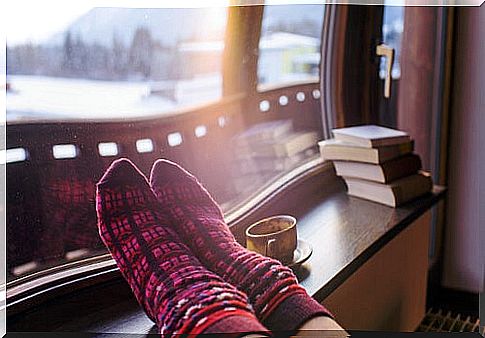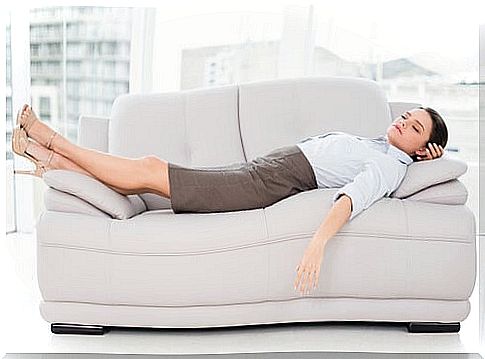How To Heat The Home Without Turning On The Heat
When winter comes, it is customary to turn on the heating to warm the home and not get cold.
However, according to an article published by the Journal of Studies in Psychology , more and more people are encouraged to change some of these habits so as not to waste energy and natural resources. Therefore, it is convenient to know how to keep the house at a naturally heated temperature.
Would you like to learn how to heat your home without turning on the heat? In this article, we tell you how to do it.
Alternatives for heating the home

The key, as the Professional Association of Environmental Scientists of Andalusia (COAMBA) indicates, is to use solar energy.
According to the United Nations (UN), this is part of renewable energy; which provide clean energy, do not pollute and are not depleted. For this reason, to heat the home without lighting the fireplace or the brazier, you can take advantage of it and follow the following tips.
Ventilate the house to heat the home
Yes, as you have read. When should it be ventilated? It should be done at times of greatest solar incidence, that is, in the morning or at noon.
In addition, doing it between five and ten minutes a day is enough, although it also depends on the space of the room and the size of the windows.
“Lock up” the cold
Close the doors and windows of spaces that are not used much. Thus, you can prevent the heat from disappearing.
For example, if you have a guest room and no one is staying there to sleep, keep the door closed. The key is to generate small spaces of heat in the areas you use.
Using dark colors to paint the exterior
An idea approved by the Argentine Solar Energy Association consists of developing bioclimatic houses that have black walls, since this pigment absorbs heat in winter.
For this reason, it is advisable to paint the outside walls with dark colors. However, if you don’t like the idea very much, you can also add a design that includes lighter tones.
Opening blinds and curtains to heat the home
If you are not at home when the sun is at its best, leave the curtains open. When it gets dark, close everything so that the temperature does not drop abruptly.
In this way, the heat will enter through the windows and warm the rooms. However, remember that this process does not always depend on the time of day, but on the orientation of the home.

Put insulation material on the walls
Placing insulating material serves to keep heat both inside and outside the home, so this is a good option if the walls of the house are hollow and you can carry out some reforms.
If the walls are solid, you can cover them with cellulose fiber. According to the following study published in the official journal of the National University of Colombia, this also works as a good insulating term.
In addition, you can also contact a professional to isolate the pipes that go through the elements and try to lose less hot water.
Using duct tape to heat the home
Although the adhesive tape is not very aesthetic, you can remove it without problems when the summer arrives or you move out of your apartment.
Buy electrical tape from a hardware store and use it to plug holes or cracks in windows and doors. Also, do not forget the cracks to prevent the cold from passing anywhere.
Put insulation on windows
There are double and even triple glasses that are installed on the windows and are capable of isolating the home from even noise.
On the other hand, if you are going to change the windows, choose to put wooden frames.
According to the following project published in 2014 by the Polytechnic University of Catalonia, this material is one of the most used in Russian architecture to combat the cold and save energy.

Plant trees to heat the home
At the door of the house it would be appropriate to plant a deciduous tree (one that loses its leaves every year).
The experts would explain that in the cold months, it lets the sun pass through the windows and, when the heat arrives, its leaves would sprout to provide shade and keep the environment cool. In turn, they also help protect the home from wind and outside noise.
Put rugs
If you don’t like those that stick to the ground because later in the summer they can be uncomfortable, it doesn’t matter. You can place some movable in the places where you are most like, for example, the living room or the dining room.
Also place one next to the bed for when you get up.
Personal advice not to turn on the heat
Dress warmer
When heating the house, instead of being inside with a single layer of clothes and the stove on to the maximum … How about doing the other way around? For example, you can put on some warmer socks, a jacket or pants when you are indoors.
Also, when you are on the couch watching a movie, feel free to use something to cover yourself (like a very thick blanket); And when you go to bed, do not go barefoot and opt for bedding that has fabrics that warm you well, such as fleece and flannel.

Eat according to the time of year
The following study published by the Journal of Food Technology and Hygiene admitted that some of the most elaborate dishes in winter were cooked and baked.
A soup, a stew, a few pastries and a tea before bed are just a few meal ideas that will increase your body temperature and prevent you from turning on the heat.
Sleeping in sunnier environments
If you sleep in a room that does not let in sunlight, it is unlikely that it will stay warm during the winter. Therefore, resting in another part of the house would also be another good idea to avoid getting cold.

Now that you know some simple tips to heat the home and not waste energy, you just have to put them into practice.
And you? Do you dare to change some habits and turn off the stove, heating or brazier in winter? Without a doubt, the environment will appreciate it.









